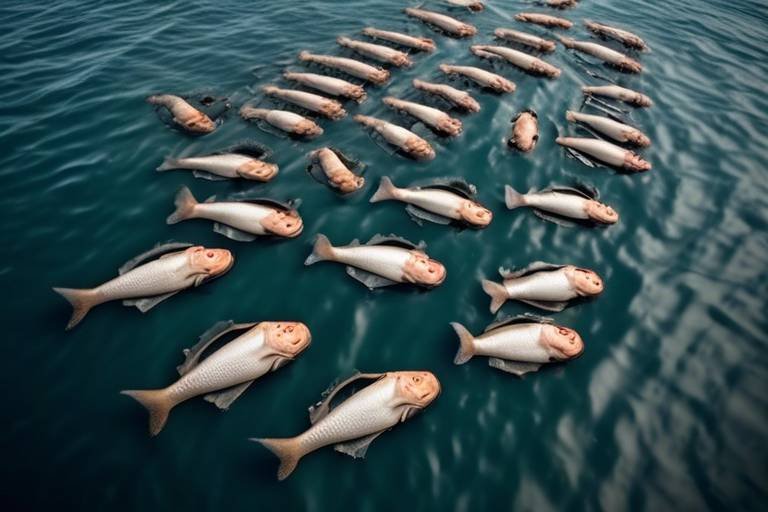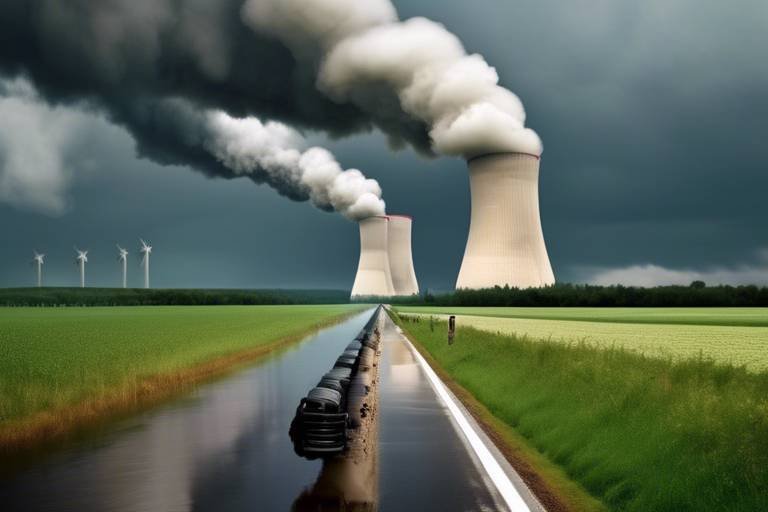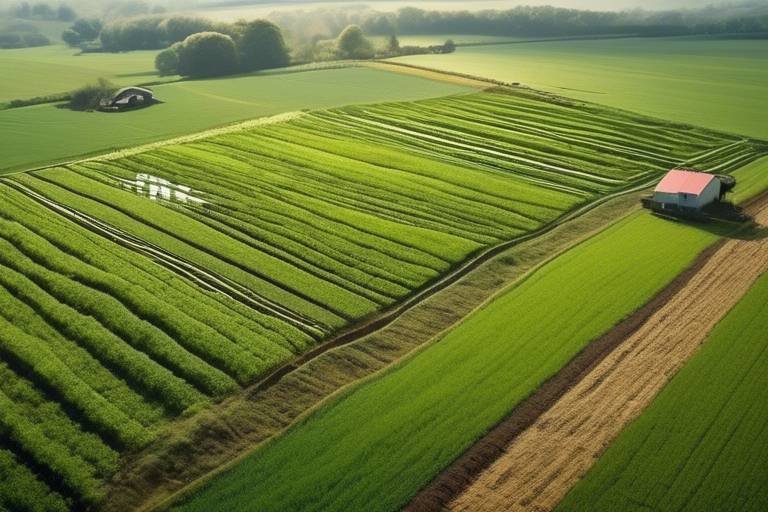The Role of Aquaculture in Feeding a Growing Population
Aquaculture, often referred to as fish farming, is becoming increasingly essential in our quest to feed a rapidly growing global population. With the world’s population projected to reach approximately 9.7 billion by 2050, the demand for protein-rich food sources is escalating at an alarming rate. Traditional fishing practices alone cannot sustain this burgeoning demand, making aquaculture a vital component in the food security puzzle. But what exactly makes aquaculture so significant? Let's dive into its multifaceted role in global food production and its impact on our environment.
First and foremost, aquaculture provides a sustainable source of protein that is crucial for human nutrition. Fish and seafood are not only delicious but also packed with essential nutrients, making them an integral part of diets worldwide. In fact, aquaculture supplies over 50% of the fish consumed globally, a figure that continues to rise. This industry not only feeds people but also supports the livelihoods of millions, particularly in developing countries where fishing is a primary industry. It creates jobs, stimulates local economies, and provides a reliable income for families, thereby enhancing food security.
Moreover, aquaculture can play a vital role in reducing poverty and promoting economic growth. By investing in fish farming, communities can tap into a sustainable income source that is less affected by the fluctuations of wild fish stocks. This stability is particularly important in regions where traditional fishing practices have led to overfishing and declining fish populations. In essence, aquaculture acts as a safety net, providing a consistent food supply and economic opportunity.
However, the significance of aquaculture extends beyond just food production and economic benefits. It also presents a unique opportunity to address some of the pressing environmental challenges we face today. For instance, by implementing sustainable practices, aquaculture can minimize its ecological footprint. Techniques such as integrated multi-trophic aquaculture (IMTA) allow for the cultivation of different species together, creating a balanced ecosystem that enhances productivity while reducing waste. This innovative approach not only benefits fish farmers but also contributes to the health of our aquatic environments.
As we navigate the complexities of feeding a growing population, the role of aquaculture becomes increasingly clear. It is not just about producing more fish; it's about doing so in a way that is environmentally responsible and economically viable. By embracing sustainable practices and fostering community involvement, aquaculture can help secure a future where food is abundant, ecosystems thrive, and local communities prosper.
- What is aquaculture? Aquaculture refers to the farming of fish, shellfish, and aquatic plants in controlled environments.
- How does aquaculture contribute to food security? It provides a reliable and sustainable source of protein, helping to meet the increasing demand for seafood.
- What are some sustainable practices in aquaculture? Techniques like integrated multi-trophic aquaculture and organic farming promote ecological balance.
- What challenges does aquaculture face? Challenges include disease outbreaks, pollution, and competition for resources.
- How can communities get involved in aquaculture? Community-based initiatives can empower individuals to manage aquatic resources responsibly.

The Importance of Aquaculture
Aquaculture, often referred to as fish farming, is becoming increasingly vital in the quest to provide a sustainable source of protein for our growing population. With the world’s population expected to reach nearly 10 billion by 2050, the demand for food—especially protein—is skyrocketing. Traditional fishing methods alone cannot keep up with this demand, which is where aquaculture steps in, offering a solution that is both efficient and environmentally friendly.
In many developing countries, aquaculture serves as a lifeline, supporting not only food security but also the livelihoods of millions. The industry is a significant contributor to economic growth, particularly in regions where fishing is a primary source of income. For instance, in Southeast Asia, fish farming has transformed local economies and provided jobs for countless families. Here are a few key points illustrating the importance of aquaculture:
- Food Security: Aquaculture provides a reliable and consistent supply of seafood, which is crucial for communities that rely heavily on fish as a primary protein source.
- Economic Growth: The sector creates jobs and stimulates local economies, making it a vital component for many developing nations.
- Diversity of Protein Sources: By cultivating a variety of fish species, aquaculture helps diversify diets and reduce dependency on wild fish stocks.
Furthermore, aquaculture is not just about quantity; it’s also about quality. The fish produced in aquaculture systems can be raised under controlled conditions, leading to healthier fish with fewer contaminants compared to their wild counterparts. This controlled environment allows for the implementation of better health management practices, ensuring the fish are not only safe to eat but also packed with the necessary nutrients that contribute to a balanced diet.
Moreover, aquaculture plays a crucial role in the conservation of wild fish populations. By providing an alternative source of seafood, it helps alleviate the pressure on overfished stocks. This is particularly important given the alarming rates of overfishing that threaten marine biodiversity. When done responsibly, aquaculture can help protect marine ecosystems while still meeting the growing demand for seafood.
In summary, the importance of aquaculture cannot be overstated. It addresses critical issues of food security, economic development, and environmental sustainability. As we move forward, embracing and investing in aquaculture will be essential to ensuring that we can feed the world’s population without compromising the health of our oceans and ecosystems.

Sustainable Practices in Aquaculture
Aquaculture, often dubbed the "blue revolution," is not just about raising fish; it's about doing so in a way that respects our planet and its resources. As the demand for seafood continues to rise, the need for sustainable practices in aquaculture has never been more critical. By implementing methods that minimize environmental impacts, we can ensure that fish farming contributes positively to both food security and ecological balance. But what does sustainability in aquaculture really mean? It means integrating practices that promote not just high yields, but also the health of aquatic ecosystems.
One of the most promising approaches is integrated multi-trophic aquaculture (IMTA). This innovative method involves cultivating different species of fish, shellfish, and plants together in a single system. Imagine a well-balanced ecosystem where fish waste serves as nutrients for plants, while the plants filter and purify the water. This symbiotic relationship not only enhances productivity but also reduces the need for chemical fertilizers and minimizes waste. In fact, studies have shown that IMTA can increase overall yield by up to 30% compared to traditional single-species farming.
Another sustainable practice gaining traction is organic aquaculture. Similar to organic farming on land, organic aquaculture focuses on raising fish without synthetic chemicals, antibiotics, or genetically modified organisms (GMOs). This method emphasizes the use of natural feeds and promotes biodiversity in aquatic environments. By adhering to strict organic standards, fish farmers can produce healthier seafood while also appealing to a growing market of environmentally conscious consumers. The table below illustrates the benefits of organic aquaculture:
| Benefits of Organic Aquaculture | Description |
|---|---|
| Healthier Fish | Fish raised organically tend to have better immune systems and overall health. |
| Environmental Protection | Organic practices help maintain water quality and biodiversity. |
| Market Demand | Increasing consumer preference for organic products can lead to higher prices. |
Moreover, ecosystem-based management is essential for maintaining the health of aquatic ecosystems. This approach emphasizes the importance of understanding the interconnections within ecosystems and managing fish farming operations accordingly. By focusing on biodiversity and water quality, aquaculture can thrive without compromising the environment. For instance, farmers can implement buffer zones around their farms to protect local habitats and reduce runoff. This proactive strategy not only benefits the ecosystem but also enhances the long-term viability of aquaculture operations.
Technological innovations are also playing a pivotal role in promoting sustainable practices. Automated feeding systems, for example, optimize feed distribution, reducing waste and ensuring that fish receive the right amount of nutrients. Additionally, advanced water quality monitoring technologies allow farmers to keep a close eye on the health of their systems, making it easier to detect and address potential issues before they escalate. These tools empower aquaculture producers to manage their resources more effectively, leading to higher productivity and lower environmental impacts.
Lastly, community involvement is a cornerstone of sustainable aquaculture. Engaging local communities not only fosters a sense of ownership but also promotes responsible management of aquatic resources. Community-based initiatives can include training programs for sustainable practices, which empower individuals to make informed decisions about fish farming. When communities are involved, the benefits of aquaculture can be shared more equitably, ensuring that everyone has a stake in preserving their natural resources.
In conclusion, sustainable practices in aquaculture are not just a trend; they are a necessity for the future of food production. By embracing methods like IMTA, organic farming, ecosystem-based management, and leveraging technology, we can create a resilient aquaculture industry that supports both people and the planet. The journey towards sustainability may be challenging, but the rewards—healthier ecosystems, improved food security, and thriving communities—are well worth the effort.
- What is integrated multi-trophic aquaculture (IMTA)? IMTA is a sustainable aquaculture practice that involves cultivating different species of aquatic organisms together, creating a balanced ecosystem.
- How does organic aquaculture differ from conventional methods? Organic aquaculture avoids the use of synthetic chemicals and GMOs, focusing instead on natural feeds and practices that promote biodiversity.
- Why is community involvement important in aquaculture? Engaging local communities ensures responsible resource management and equitable distribution of benefits, enhancing the overall sustainability of aquaculture practices.

Ecosystem-based management is a holistic approach that emphasizes the importance of maintaining the health of aquatic ecosystems while pursuing aquaculture. Imagine the delicate balance of a thriving underwater community, where every fish, plant, and microorganism plays a role in the bigger picture. By adopting this management style, aquaculture operations can significantly reduce their negative impacts on biodiversity and water quality. This is crucial for ensuring the long-term sustainability of fish farming, especially as we face the growing demand for seafood.
One of the key principles of ecosystem-based management is the recognition that aquatic systems are interconnected. For instance, when fish farms are designed with the surrounding ecosystem in mind, they can enhance rather than degrade local habitats. This involves practices such as maintaining natural vegetation along water bodies, which can filter pollutants and provide shelter for wildlife. By integrating these practices, aquaculture can contribute positively to the environment rather than simply extracting resources.
Moreover, ecosystem-based management encourages the use of integrated multi-trophic aquaculture (IMTA). In IMTA, different species are cultivated together in a way that mimics natural ecosystems. For example, fish can be raised alongside shellfish and seaweeds. The fish produce waste that serves as nutrients for the shellfish and seaweeds, creating a symbiotic relationship that benefits all parties involved. This not only boosts productivity but also minimizes the environmental footprint of aquaculture operations.
Additionally, implementing ecosystem-based management requires ongoing monitoring and assessment. This means regularly evaluating the health of aquatic ecosystems and adjusting practices as necessary. By using technology such as water quality sensors and biodiversity assessments, aquaculture farms can ensure they are not harming the environment. This proactive approach not only helps in maintaining the ecological balance but also builds trust with local communities and stakeholders who are increasingly concerned about environmental issues.
In conclusion, ecosystem-based management is not just a trend; it's a necessity in the world of aquaculture. By prioritizing the health of aquatic ecosystems, we can ensure that fish farming remains a viable and sustainable source of food for the future. This approach not only supports biodiversity but also enhances the resilience of aquaculture systems in the face of climate change and other environmental challenges. Ultimately, when we nurture our ecosystems, we are investing in the future of our food systems.
- What is ecosystem-based management in aquaculture? Ecosystem-based management is an approach that focuses on maintaining the health of aquatic ecosystems while conducting aquaculture practices. It aims to minimize negative impacts on biodiversity and water quality.
- How does integrated multi-trophic aquaculture work? Integrated multi-trophic aquaculture involves cultivating different species together in a way that mimics natural ecosystems, where the waste from one species serves as nutrients for another, creating a sustainable cycle.
- Why is ongoing monitoring important in aquaculture? Ongoing monitoring is essential to assess the health of aquatic ecosystems and ensure that aquaculture practices do not harm the environment. It allows for timely adjustments to management practices.

In the ever-evolving world of aquaculture, technological innovations are at the forefront of transforming fish farming practices. Imagine a world where farmers can monitor the health and growth of their fish with just a few clicks on their smartphones. This is not a distant dream but a reality made possible by advancements in technology. Automated feeding systems, for example, allow for precise feeding schedules that not only enhance fish growth but also reduce waste and improve feed efficiency. This means healthier fish and a more sustainable farming process.
Moreover, the integration of water quality monitoring systems has revolutionized the way aquaculture operations manage their environments. These systems continuously track parameters such as pH, oxygen levels, and temperature, ensuring that fish are raised in optimal conditions. When water quality is maintained, fish thrive, leading to higher yields and better quality seafood. It's akin to giving your plants the perfect amount of sunlight and water—when conditions are just right, the results are remarkable!
But the technological advancements don't stop there. Data analytics is also playing a significant role in aquaculture. By analyzing data collected from various sources, farmers can make informed decisions that enhance productivity. For instance, predictive analytics can forecast growth rates and help in planning harvests more efficiently. This not only maximizes output but also minimizes the risk of overproduction, which can lead to waste and environmental degradation.
In addition to these innovations, the rise of recirculating aquaculture systems (RAS) has been a game-changer. RAS technology allows for the recycling of water within the farming system, drastically reducing water usage and minimizing environmental impact. This technology is especially beneficial in areas where water is scarce, making it a sustainable option for fish farming in arid regions. By using RAS, farmers can produce high-quality fish while conserving precious resources.
Furthermore, the use of artificial intelligence (AI) in aquaculture is paving the way for smarter farming practices. AI can analyze vast amounts of data to optimize feeding schedules, predict disease outbreaks, and even assess fish behavior. Imagine having a virtual assistant that helps you manage your farm more efficiently—this is the future that AI promises for aquaculture.
As we look towards the future, it is clear that these technological innovations are not just enhancing productivity; they are also paving the way for a more sustainable and responsible aquaculture industry. By embracing these technologies, we can ensure that fish farming meets the demands of a growing population while protecting our precious aquatic ecosystems. The marriage of technology and aquaculture is a beautiful synergy that holds the key to feeding the world sustainably.
- What is aquaculture? Aquaculture is the farming of aquatic organisms, including fish, crustaceans, mollusks, and aquatic plants, in controlled environments.
- How does technology improve aquaculture? Technology enhances aquaculture by optimizing feeding, monitoring water quality, and enabling data-driven decisions to improve fish health and productivity.
- What are recirculating aquaculture systems? RAS are systems that recycle water within the fish farming process, reducing water usage and minimizing environmental impacts.
- How can aquaculture help with food security? Aquaculture provides a sustainable source of protein, reducing reliance on wild fish stocks and helping to meet the nutritional needs of a growing population.

Community involvement in aquaculture is not just a buzzword; it’s a vital ingredient for the success and sustainability of fish farming practices. When local communities actively participate in aquaculture, they foster a sense of ownership and responsibility towards aquatic resources. Imagine a neighborhood where everyone pitches in to maintain a shared garden; this collective effort not only yields fresh vegetables but also strengthens community bonds. Similarly, when communities engage in aquaculture, they can ensure that the benefits—be it economic, nutritional, or environmental—are shared equitably among all members.
One of the remarkable aspects of community involvement is its ability to promote sustainable practices. When people are involved in the decision-making processes regarding aquaculture, they are more likely to adopt environmentally friendly methods. For instance, local fish farmers might implement integrated multi-trophic aquaculture (IMTA), where different species are farmed together to create a balanced ecosystem. In this system, waste from one species serves as food for another, minimizing waste and maximizing productivity. This not only helps in maintaining ecological balance but also enhances the livelihoods of community members.
Moreover, community-based initiatives can empower individuals through education and training. Workshops and hands-on training sessions can equip locals with the knowledge they need to manage aquaculture systems effectively. For example, teaching farmers about sustainable feed options can lead to healthier fish and reduced environmental impact. This education can be transformative, as it enables communities to make informed decisions that benefit both their families and the environment.
To further illustrate the impact of community involvement, consider the following table that outlines key benefits:
| Benefit | Description |
|---|---|
| Empowerment | Communities gain control over their resources and decision-making processes. |
| Education | Increased knowledge leads to better management practices and sustainability. |
| Economic Growth | Local jobs are created, and income is generated from sustainable aquaculture. |
| Social Cohesion | Working together fosters relationships and strengthens community ties. |
Involving communities in aquaculture not only enhances sustainability but also promotes social equity. When all members of a community have a stake in the aquaculture operations, it leads to a more equitable distribution of resources and benefits. This approach can help mitigate conflicts over resource use, as everyone understands their role and the importance of preserving the ecosystem for future generations.
In conclusion, community involvement is a powerful tool that can transform aquaculture into a more sustainable and equitable practice. By engaging local populations, we not only improve fish farming methods but also ensure that the benefits of aquaculture extend far beyond the water’s edge, enriching the lives of everyone involved.
- What is the role of local communities in aquaculture?
Local communities play a crucial role in managing resources, adopting sustainable practices, and ensuring equitable distribution of benefits. - How can community involvement enhance sustainability in aquaculture?
Through education and collective decision-making, communities can implement practices that minimize environmental impacts and improve productivity. - What are some examples of successful community-based aquaculture initiatives?
Examples include integrated multi-trophic aquaculture and local fish farming cooperatives that share resources and knowledge.
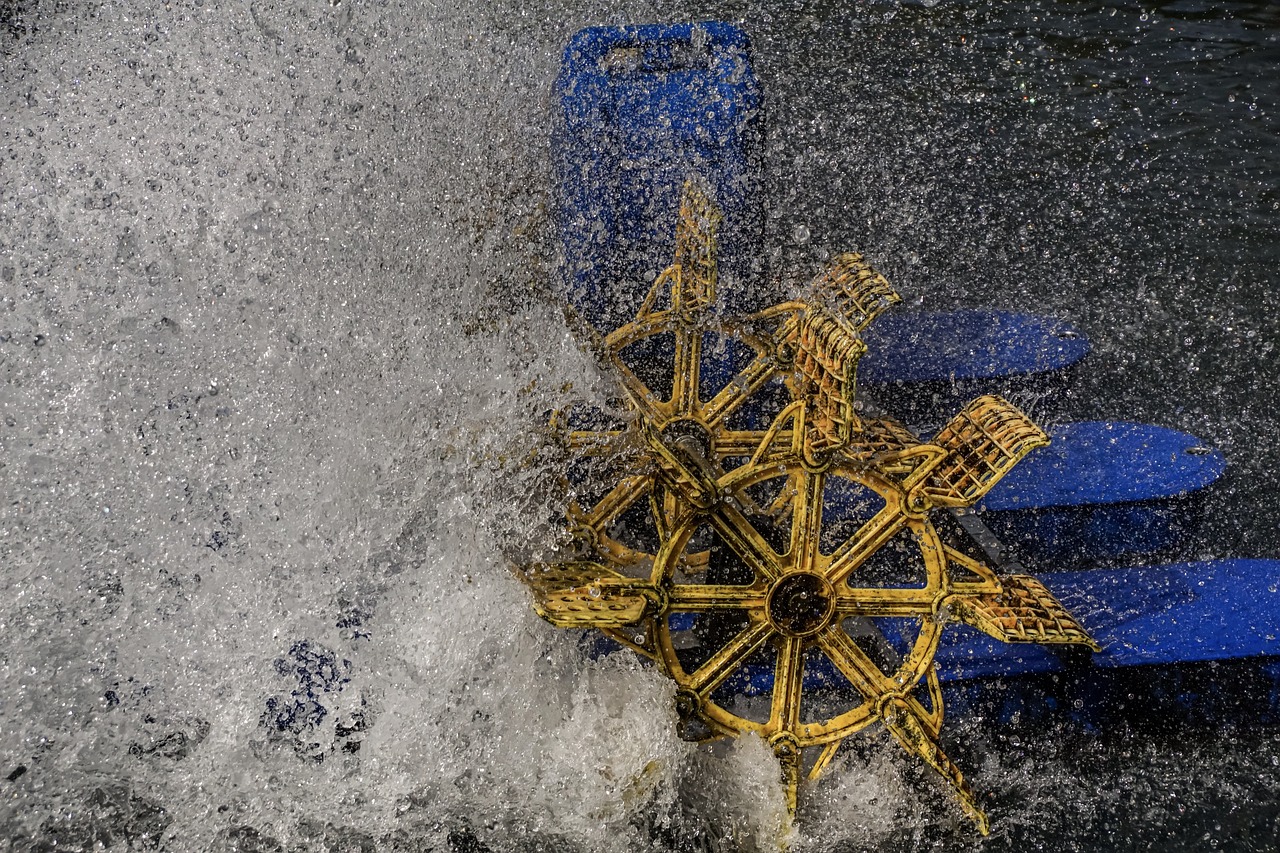
Aquaculture, often referred to as fish farming, serves as a crucial ally in the fight against overfishing. With wild fish stocks dwindling due to unsustainable fishing practices, aquaculture provides a viable alternative to meet the rising demand for seafood. Imagine a world where our oceans are not stripped bare, but instead, are thriving ecosystems full of life. This is the promise that aquaculture holds. By cultivating fish, shellfish, and aquatic plants, we can reduce the pressure on wild populations, allowing them to recover and flourish.
One of the most significant advantages of aquaculture is its ability to produce seafood at a scale that can match or even exceed the consumption rates of wild fish. For instance, in 2020, global aquaculture production reached over 100 million metric tons, which is a staggering amount compared to the declining numbers of fish caught in the wild. This shift not only alleviates the burden on marine ecosystems but also promotes the conservation of various species that are on the brink of extinction due to overfishing.
Moreover, aquaculture can be tailored to include species that are less threatened, allowing for a diverse range of seafood options. The practice of cultivating species such as tilapia, catfish, and certain shellfish diversifies our diets while ensuring that we are not solely reliant on overfished species like cod or tuna. This strategic approach helps maintain biodiversity in our oceans, which is vital for the health of marine ecosystems.
However, it's essential to recognize that not all aquaculture practices are created equal. Sustainable aquaculture methods focus on minimizing environmental impacts and ensuring that fish farming does not contribute to water pollution or habitat destruction. By implementing practices such as integrated multi-trophic aquaculture, where different species are farmed together to create a balanced ecosystem, we can further reduce the strain on wild fish populations.
In addition, community involvement in aquaculture initiatives can lead to better management of aquatic resources. When local communities are empowered to engage in sustainable fish farming, they not only contribute to food security but also become stewards of their natural resources. This holistic approach ensures that the benefits of aquaculture are shared equitably, fostering a sense of responsibility and care for the environment among the community members.
In conclusion, aquaculture is not just a solution; it is a **lifeline** for our oceans and a pathway toward sustainable seafood production. By embracing responsible fish farming practices, we can significantly reduce overfishing pressure, protect marine biodiversity, and ensure that future generations can enjoy the rich bounty of the seas. As we continue to innovate and improve our aquaculture practices, we inch closer to a balanced relationship with our oceans—one where both human needs and environmental health are prioritized.
- What is aquaculture?
Aquaculture is the farming of aquatic organisms, including fish, shellfish, and aquatic plants, in controlled environments. - How does aquaculture help reduce overfishing?
By providing an alternative source of seafood, aquaculture alleviates the pressure on wild fish stocks, allowing them to recover and thrive. - What are sustainable aquaculture practices?
Sustainable practices include integrated multi-trophic aquaculture, organic farming, and community-based initiatives that minimize environmental impacts. - Can aquaculture contribute to food security?
Yes, aquaculture can provide a reliable and sustainable source of protein, supporting food security for growing populations.
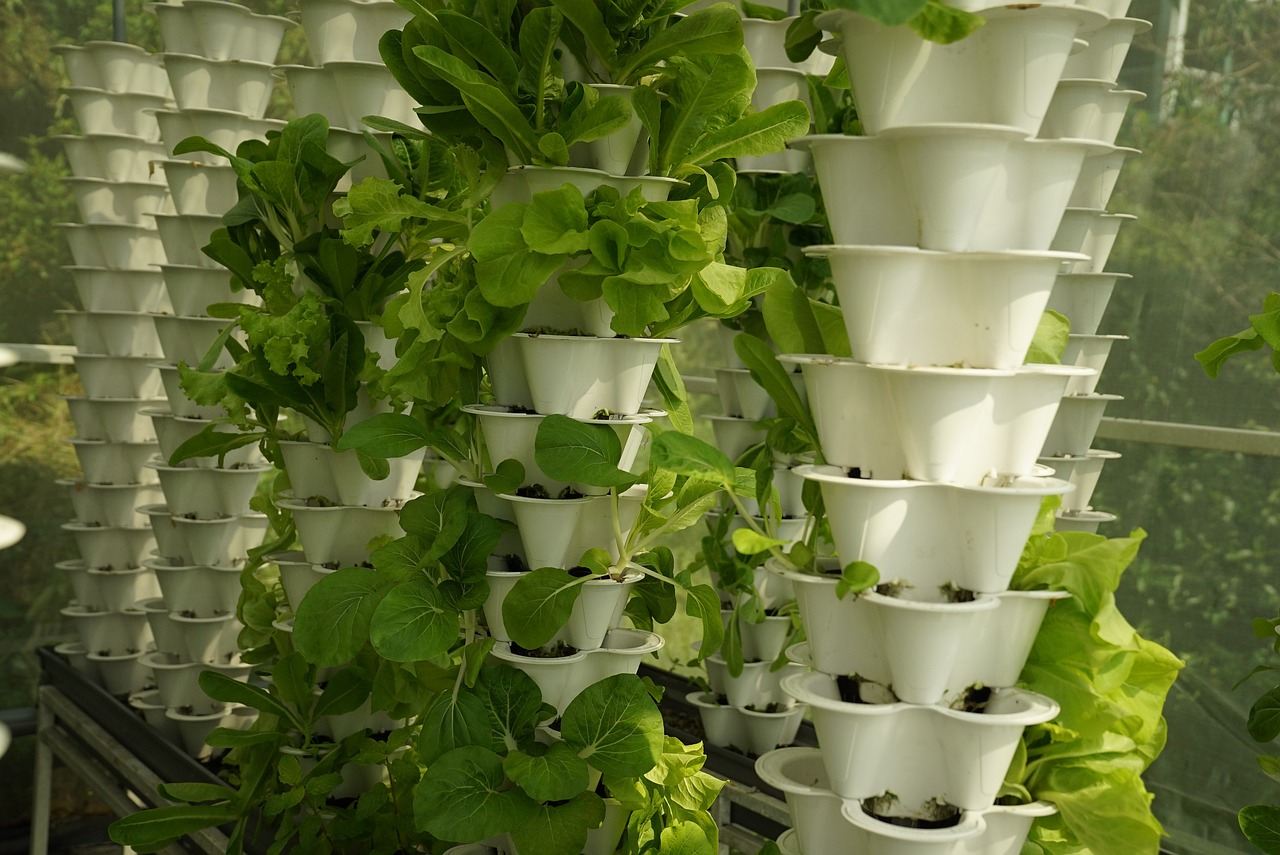
Aquaculture, while a beacon of hope for addressing global food shortages, does not come without its own set of challenges. As we dive deeper into the complexities of fish farming, it's crucial to recognize the hurdles that threaten its success. One of the most pressing issues is disease outbreaks. Just like humans, fish can succumb to various illnesses, which can spread rapidly in densely populated farming environments. This not only affects the health of the fish but can also lead to significant economic losses for farmers. Imagine a farmer watching their hard work wash away due to a sudden disease outbreak; it's a nightmare scenario that many face.
Another significant challenge is pollution. Fish farms can unintentionally contribute to the degradation of local ecosystems through the release of waste products and chemicals. If not managed properly, this pollution can lead to a decline in water quality, affecting not just the farmed fish but also the surrounding wildlife. It's akin to throwing a pebble into a pond; the ripples of pollution can spread far and wide, impacting various forms of life. Therefore, implementing stringent waste management practices is paramount.
Moreover, aquaculture often faces resource competition. As the demand for fish continues to rise, so does the competition for essential resources such as water, feed, and space. In many regions, this competition can lead to conflicts with other industries and local communities. For instance, freshwater resources may become scarce due to over-extraction for fish farming, leaving agriculture and other sectors struggling to survive. To illustrate, consider a table that outlines the key resources and their competing demands:
| Resource | Aquaculture Demand | Competing Industries |
|---|---|---|
| Water | High | Agriculture, Industry |
| Feed | High | Livestock Farming |
| Space | Moderate | Urban Development |
To tackle these challenges effectively, the industry must adopt innovative solutions and collaborative approaches. It's not just about farming fish; it's about creating a sustainable ecosystem where aquaculture can thrive alongside other industries. By fostering partnerships with local communities and stakeholders, aquaculture can not only mitigate its challenges but also enhance its contributions to food security and environmental sustainability.
In summary, while aquaculture holds great promise for feeding the world's growing population, it must navigate a series of hurdles. From disease management to pollution control and resource allocation, addressing these challenges is essential for the industry's future. It's a complex dance, but with the right steps, aquaculture can continue to flourish and provide a sustainable source of nutrition for generations to come.
1. What are the main challenges aquaculture faces?
Aquaculture faces challenges such as disease outbreaks, pollution, and competition for resources. Each of these factors can significantly impact fish health and farm productivity.
2. How can disease outbreaks be prevented in aquaculture?
Effective health management strategies, including vaccination, biosecurity measures, and veterinary care, play a crucial role in preventing disease in aquaculture settings.
3. What is the impact of pollution from aquaculture?
Pollution from aquaculture can degrade local ecosystems, affecting water quality and harming both farmed and wild fish populations. Proper waste management practices are essential to mitigate these effects.
4. How does aquaculture compete for resources?
Aquaculture competes for essential resources such as water and feed with other industries like agriculture and livestock farming, which can lead to conflicts and resource scarcity.

Health management in aquaculture is a critical component that ensures the sustainability and productivity of fish farming operations. Just like how we need regular check-ups to maintain our health, fish also require vigilant monitoring to prevent diseases that could wipe out entire populations. Effective health management strategies are not just beneficial; they are essential for the long-term viability of the aquaculture industry.
One of the primary strategies in health management is vaccination. Just as humans receive vaccinations to protect against various diseases, fish can also be vaccinated to enhance their immune responses. Vaccination helps to prevent outbreaks of diseases such as vibriosis and furunculosis, which can lead to significant losses. Regular vaccination schedules can be implemented, ensuring that fish are protected at critical life stages.
Biosecurity measures are another cornerstone of health management. These measures involve creating barriers to prevent the introduction and spread of pathogens. This can include practices such as:
- Quarantine procedures for new stock.
- Regular cleaning and disinfection of equipment.
- Controlling access to aquaculture facilities.
By implementing strict biosecurity protocols, aquaculture operations can significantly reduce the risk of disease outbreaks. It's like having a security system for your home; it keeps unwanted threats at bay and ensures a safe environment.
Veterinary care also plays a vital role in health management. Having a qualified veterinarian who specializes in aquatic species can make a world of difference. They can provide valuable advice on nutrition, disease prevention, and treatment options. Regular health assessments conducted by veterinarians help in early detection of health issues, allowing for prompt intervention and minimizing the impact on fish stocks.
Moreover, the integration of technology in health management cannot be overlooked. Advanced monitoring systems can track water quality parameters such as temperature, pH, and dissolved oxygen levels. These systems alert farmers to any changes that could affect fish health, allowing for immediate corrective actions. Think of it as having a smart home system that keeps you informed about the conditions of your living space.
In conclusion, effective health management in aquaculture is multi-faceted, involving vaccination, biosecurity, veterinary care, and technology. By prioritizing these aspects, aquaculture operations can ensure healthier fish populations, which in turn leads to more sustainable practices and a reliable source of protein for a growing population. The health of our aquatic resources is not just an industry concern; it is a global responsibility that requires collective action and commitment.
- What are the common diseases in aquaculture? Common diseases include vibriosis, furunculosis, and various parasitic infections.
- How often should fish be vaccinated? Vaccination schedules can vary, but it's typically recommended to vaccinate fish at key developmental stages.
- What role does water quality play in fish health? Water quality is crucial; poor conditions can lead to stress and susceptibility to diseases.
- Can technology help in managing fish health? Yes, technology can monitor environmental conditions and alert farmers to potential health risks.

Conducting an Environmental Impact Assessment (EIA) is not just a regulatory requirement; it’s a critical step in ensuring that aquaculture practices are sustainable and responsible. Imagine setting up a new fish farm without fully understanding how it might affect the surrounding environment—this could lead to devastating consequences for local ecosystems. An EIA allows stakeholders to evaluate the potential environmental effects of proposed aquaculture operations before they begin, ensuring that the health of aquatic ecosystems is prioritized.
During the EIA process, various factors are considered, including water quality, biodiversity, and the potential for pollution. This comprehensive evaluation helps identify risks associated with fish farming, such as:
- Water contamination from waste and chemicals
- Impact on local fish populations and other wildlife
- Changes to the physical environment, such as habitat destruction
One of the key components of an EIA is stakeholder engagement. Local communities, environmental groups, and government agencies should all have a voice in the assessment process. By incorporating diverse perspectives, the EIA can address concerns that might otherwise be overlooked. This participatory approach not only fosters transparency but also builds trust between aquaculture operators and the communities they affect.
Furthermore, the EIA provides a framework for implementing mitigation measures. For instance, if a proposed fish farm is found to pose a risk to a nearby wetland, the EIA can recommend strategies to minimize that impact, such as:
- Establishing buffer zones to protect sensitive areas
- Implementing waste management systems to reduce pollution
- Monitoring local wildlife populations to ensure biodiversity is maintained
Ultimately, the goal of an Environmental Impact Assessment is to create a balance between aquaculture development and environmental stewardship. By proactively identifying and addressing potential environmental issues, the aquaculture industry can thrive while also protecting our precious aquatic ecosystems for future generations. This sustainable approach is not just beneficial for the environment; it also enhances the long-term viability of fish farming operations, ensuring that they can continue to provide food and economic opportunities in a responsible manner.
Q1: What is the purpose of an Environmental Impact Assessment in aquaculture?
A1: The purpose of an EIA is to evaluate the potential environmental consequences of aquaculture operations, ensuring that any negative impacts on ecosystems are identified and addressed before farming begins.
Q2: Who should be involved in the EIA process?
A2: Stakeholders such as local communities, environmental organizations, and government agencies should be involved in the EIA process to ensure diverse perspectives and concerns are considered.
Q3: How can an EIA benefit aquaculture operations?
A3: An EIA can help aquaculture operators identify potential risks and implement mitigation measures, ultimately leading to more sustainable practices and improved long-term viability of their operations.
Frequently Asked Questions
- What is aquaculture and why is it important?
Aquaculture, often referred to as fish farming, is the practice of cultivating aquatic organisms, such as fish, shellfish, and seaweed, in controlled environments. It’s important because it provides a sustainable source of protein that helps feed the growing global population, supports livelihoods, and contributes significantly to economic growth, especially in developing countries.
- How does aquaculture contribute to food security?
Aquaculture plays a vital role in food security by increasing the availability of seafood, which is a primary source of protein for billions of people. By supplementing wild fish stocks, aquaculture helps ensure that there is enough food to meet the needs of a growing population while reducing the pressure on overfished marine environments.
- What are sustainable practices in aquaculture?
Sustainable practices in aquaculture include methods like integrated multi-trophic aquaculture, where different species are farmed together to enhance ecological balance, and organic farming practices that minimize environmental impact. These approaches help maintain healthy ecosystems while maximizing production.
- What challenges does aquaculture face?
Despite its potential, aquaculture faces several challenges, including disease outbreaks, pollution from waste, and competition for resources such as water and feed. Addressing these challenges is crucial for ensuring the industry's long-term sustainability and growth.
- How can community involvement improve aquaculture?
Community involvement in aquaculture can lead to more sustainable practices by empowering local individuals and promoting responsible resource management. When communities engage in fish farming, they ensure that the benefits are equitably shared, fostering a sense of ownership and commitment to sustainable practices.
- What role does technology play in aquaculture?
Technological innovations, such as automated feeding systems and advanced water quality monitoring tools, play a significant role in enhancing the efficiency and sustainability of aquaculture. These technologies lead to better resource management, improved fish health, and ultimately, higher productivity in fish farming.
- How can aquaculture reduce overfishing?
Aquaculture can significantly reduce overfishing by providing an alternative source of seafood. By cultivating fish in controlled environments, we can help conserve wild fish stocks and promote biodiversity, ensuring healthier marine ecosystems.
- What is ecosystem-based management in aquaculture?
Ecosystem-based management is an approach that focuses on maintaining the health of aquatic ecosystems while conducting aquaculture operations. This strategy aims to reduce negative impacts on biodiversity and water quality, ensuring that fish farming is sustainable in the long run.
- Why are health management strategies important in aquaculture?
Health management strategies are crucial in aquaculture to prevent disease outbreaks that can devastate fish populations. Effective measures, including vaccination, biosecurity protocols, and veterinary care, help maintain fish health and productivity, ensuring a stable food supply.
- What is an environmental impact assessment (EIA) in aquaculture?
An environmental impact assessment (EIA) is a process used to evaluate the potential environmental consequences of aquaculture operations. Conducting an EIA helps identify risks and implement measures to mitigate negative effects on ecosystems and local communities, promoting sustainable practices.

